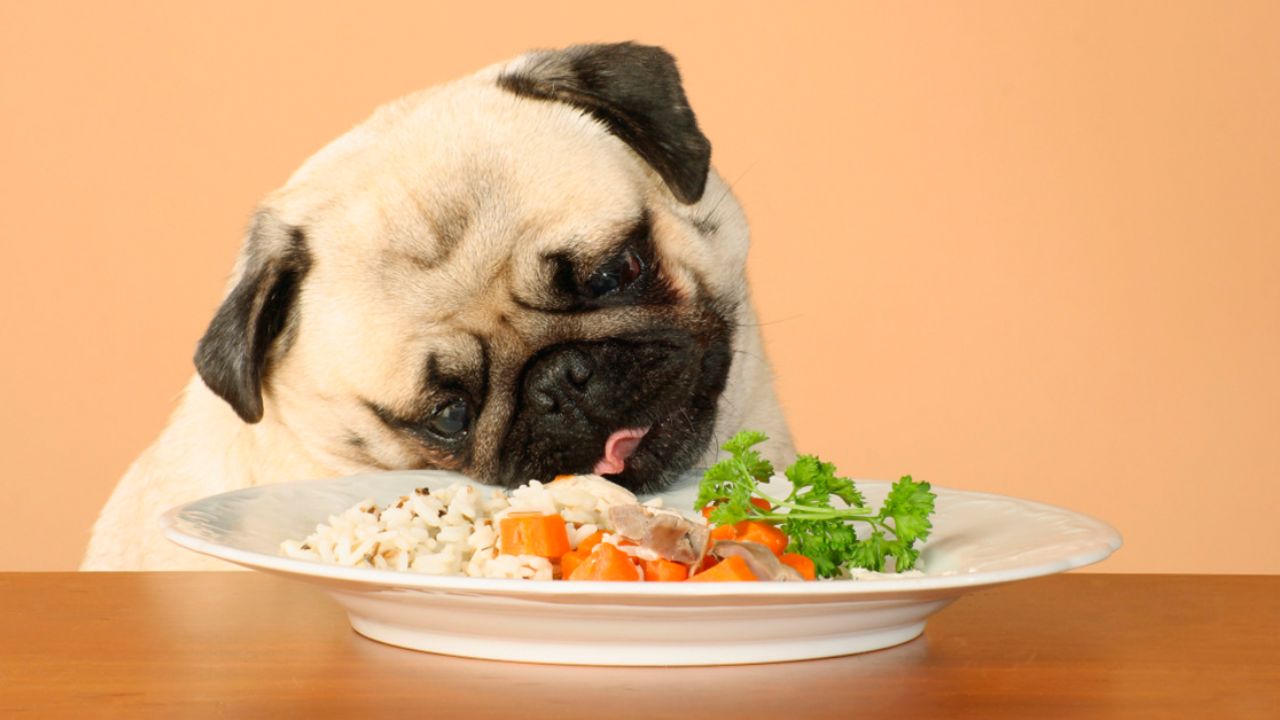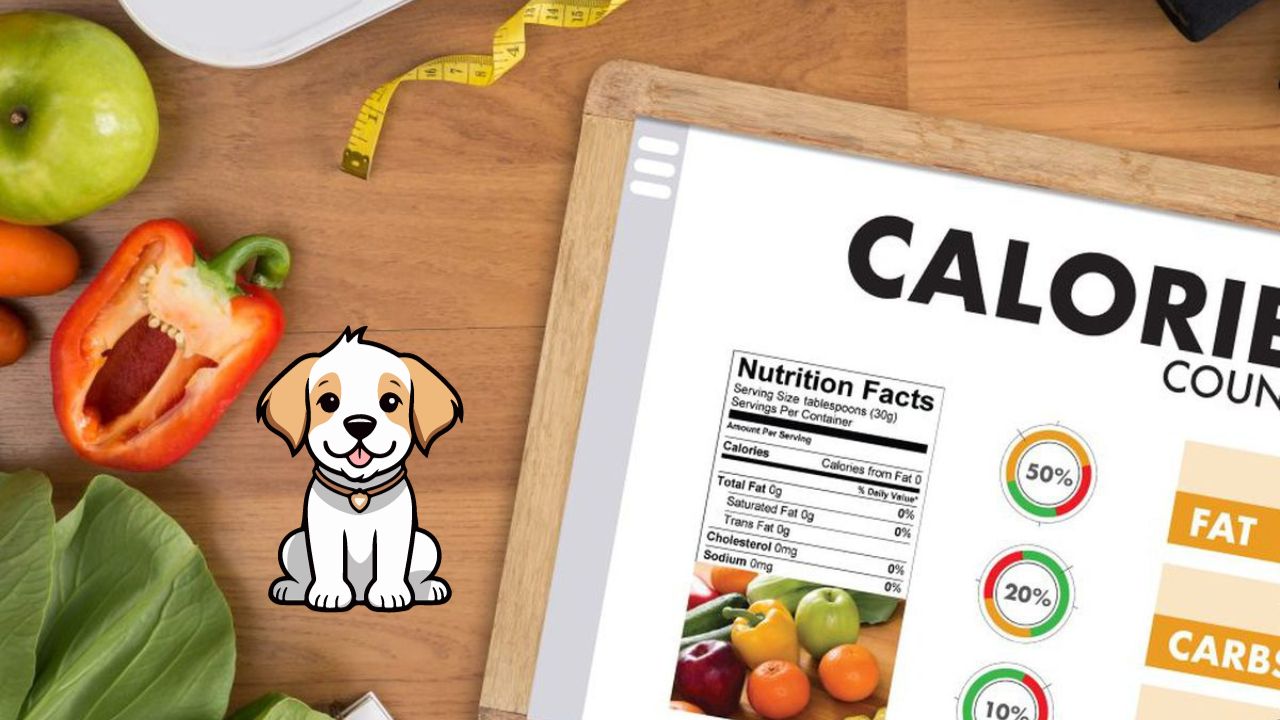As dog owners, ensuring the well-being of our furry friends is a top priority. One crucial overlooked aspect is understanding and meeting our dog’s daily calorie requirements. This article explores the importance of this knowledge and its impact on our canine companion’s overall health and vitality.
Numerous factors determine how many calories (energy) a pet needs to maintain a healthy weight for their stage of life. First, the energy required for basic bodily processes such as respiration, digestion, heart, and brain function (Resting Energy Requirements, or RER) can be found by multiplying the animal’s body weight in kilograms raised to the ¾ power by 70.
For instance, an adult neutered dog weighing 10 kg (22 lb) at a healthy weight would require RER = 70(10 kg)3/4 ≈ 400 Calories per day. The charts below can also calculate calorie requirements while at rest.
HOW HARD IS YOUR DOG WORKING?
One’s perception of a dog’s level of effort is subjective. The owner’s perception of the training schedule influences the answer, which is arbitrary. A professional trainer, for instance, has a very different perspective on hard work than recreational hunters.
Top-tier dogs of all ages put in much more effort than dogs that only went hunting on Saturday mornings. By calculating the amount of time your dog spends working, the number of days per week, and the number of months per year, you can accurately assess how hard your dog is working. You can review some hard facts based on those numbers.
Factors Affecting Caloric Needs
The elements influencing a dog’s caloric requirements are pivotal for responsible pet care. Various factors such as breed, size, age, and activity level are crucial in determining a canine companion’s optimal amount of calories. Delve into these considerations to ensure a nutritious diet that promotes overall health and well-being.
Calculating Basal Metabolic Rate (BMR)
Determining the Basal Metabolic Rate (BMR) involves calculating the energy expended by the body at rest. This essential metric provides insight into the foundational calorie needs required for bodily functions when inactive. Computed through a specific formula considering weight, age, and size, understanding BMR is pivotal in tailoring precise dietary plans for human and canine individuals, ensuring optimal health and well-being.
Factoring in Activity Level
Considering your dog’s activity level is pivotal to determining its calorie needs. Dogs with higher energy levels require more calories to fuel their active lifestyle, while less active dogs may need fewer calories. It’s crucial to factor in their daily activities, whether vigorous play or a more relaxed routine, to ensure a well-balanced and tailored diet supporting their overall health and vitality.
Choosing the Right Dog Food
Selecting the optimal dog food is a crucial decision for pet owners. Making the right choice involves careful consideration of ingredients, nutritional value, and the specific needs of your furry companion. From reading and understanding labels to avoiding common pitfalls, ensuring your dog’s well-balanced diet contributes significantly to their overall health and happiness. Choose wisely to promote a vibrant and thriving life for your canine friend.
Monitoring Your Dog’s Weight
Keeping a close eye on your canine companion’s weight is crucial for their overall health. Regular monitoring allows you to assess the effectiveness of their diet, ensuring they maintain an optimal body condition. By observing weight changes and making necessary adjustments to their calorie intake, you contribute to their well-being, preventing issues like obesity or malnutrition. Stay attentive to your dog’s weight for a happy and healthy furry friend.
Creating a Balanced Diet
Crafting a well-rounded and nutritious diet for your dog involves meticulous attention to key components such as protein, fat, and carbohydrates. Achieving a “Creating a Balanced Diet” for your canine companion ensures optimal health and vitality. By selecting quality ingredients, considering portion sizes, and incorporating essential vitamins and minerals, pet owners contribute to their dog’s overall well-being and longevity.
Homemade Diets vs. Commercial Dog Food

Choosing between homemade diets and commercial dog food is pivotal when considering your furry friend’s nutrition. Homemade diets offer a personalized touch but require meticulous planning, while commercial dog food provides convenience and often undergoes rigorous nutritional testing. You can meet your dog’s specific dietary needs by making an informed decision and being aware of each option’s benefits and drawbacks.
Treats and Snacks
Indulge your furry friend with delightful treats and snacks that not only tantalize their taste buds but also contribute to their overall well-being. Explore various delicious options, from healthy, low-calorie treats to flavorful snacks that perfectly balance nutrition. Elevate your pet’s joy with these tasty rewards, ensuring they savour every moment of their treat time.
Special Considerations for Senior Dogs
Addressing the unique needs of ageing canine companions, this section explores essential considerations for senior dogs. Understanding and adapting to their changing nutritional requirements becomes crucial as our furry friends enter their golden years. Learn how to adjust calorie intake, tackle age-related health issues, and provide the optimal care necessary to ensure the well-being and longevity of your senior dog.
Weight Loss and Weight Gain Strategies
Effective strategies for achieving weight loss or weight gain for your furry companion. Uncover safe and gradual approaches tailored to your dog’s unique needs. Whether your goal is to help your pet shed excess pounds or build a healthier physique, this section provides insights into balanced methods that promote overall well-being. Explore personalized strategies to ensure your dog reaches and maintains an optimal body condition.
Consultation with a Veterinarian
Seeking guidance from a veterinarian is crucial for ensuring the optimal health of your canine companion. A veterinarian consultation involves:
- Professional advice tailored to your dog’s unique needs.
- Providing insights into dietary requirements.
- Health considerations.
- Personalized recommendations.
This expert guidance is pivotal in making informed decisions about your pet’s well-being and nutrition, ensuring your furry friend’s happy and healthy life.
Benefits of Meeting Caloric Requirements

Ensuring your dog’s optimal well-being involves understanding the substantial advantages of meeting their caloric requirements. By providing the right amount of calories tailored to your dog’s size, age, and activity level, you contribute to enhanced overall health and vitality. Meeting these nutritional needs fosters a well-balanced diet and promotes longevity. A balanced intake of macronutrients and essential vitamins and minerals supports your canine companion’s physical health, ensuring they lead a happy, energetic life. Embracing the benefits of meeting caloric requirements is a proactive step toward fostering a thriving and contented furry friend.
DETERMINE THE DOG’S DAILY CALORIC NEEDS
One way to figure out how much to feed is to look at the feeding instructions on a bag. A cross-reference of body conditions provides an overview of the weight. But most scientists calculate a dog’s basic caloric requirements using a formula. It is a two-step, easy process. To convert a dog’s weight from pounds to kilograms, divide its weight in pounds by 2.2. Multiply the dog’s body weight in kilograms by 70 to get its Resting Energy Requirement (RER), then increase the result by 75.
HERE’S AN EXAMPLE:
A 45-pound dog’s weight is divided by 2.2, which means he weighs 20 kilograms.
- 70 times 20 raised to .75 is 662 kilocalories.
- So, your dog must consume 662 kilocalories daily for basic bodily functions.
DETERMINE THE DOG’S DAILY AND WORKING CALORIC NEEDS.
If your 45-pound dog performs light work, multiply that daily caloric need by 2. For moderate work, multiply the daily caloric need by 3. For heavy work, multiply the daily caloric need by up to 6. Here’s how it looks:
- 662 times 2 = 1,324 calories/day
- 662 times 3 = 1,986 calories/day
- 662 times 6 = 3,972 calories/day
Conclusion
How to calculate and meet your dog’s daily calorie requirements, meeting your dog’s daily calorie requirements is fundamental to responsible pet ownership. By considering factors like size, age, and activity level, choosing the right dog food, and monitoring their weight, you contribute to their longevity and well-being. Consulting with a veterinarian is always a wise decision regarding your pet’s diet.
FAQ
How Do I Calculate My Dog’s Daily Calorie Intake?
Insert your dog’s body weight in kilograms into this equation to determine their daily resting energy requirement (RER) in calories.
- RER (calories/day) = 70 x (BWkg) 0.75.
- RER (calories/day) = 70 x (22.7) 0.75.
- RER (calories/day) = 70 x 10.4.
- RER (calories/day) = 728 dog calories per day.
How Do I Calculate My Dog’s Kcal Kg Day?
For pets weighing between 2 and 45 kg (5-99 pounds), RER, expressed in kilocalories of metabolizable energy (ME) per kilogram body weight per day, can be calculated by: RER (kcal/day) = 30 x (current body weight in kg) + 70, or RER (kcal/day) = 70 x (current body weight in kg)0.75 (Convert body weight from pounds.
How Do I Calculate Calories in My Dog Food?
How to calculate and meet your dog’s daily calorie requirements, dog food, for instance, has 310 kcal ME per cup. Additionally, according to the label, one cup of food weighs 110 grams. When the weight of the food is in grams, the formula to convert kcal/cup to kcal/kg is (1000 divided by the weight of the food per cup) X number of calories per cup. 310 x 1000 / 110 = 2818 kcal ME/kg.
How Do I Track My Dog’s Calories?
Figuring out your dog’s calorie needs.
How to calculate and meet your dog’s daily calorie requirements, don’t freak out; you must do the math to determine your dog’s Daily Energy Requirements. Here’s the simple formula: =70*(kg Body Weight) ^0.75. This formula looks scary, but it’s easy to understand.

